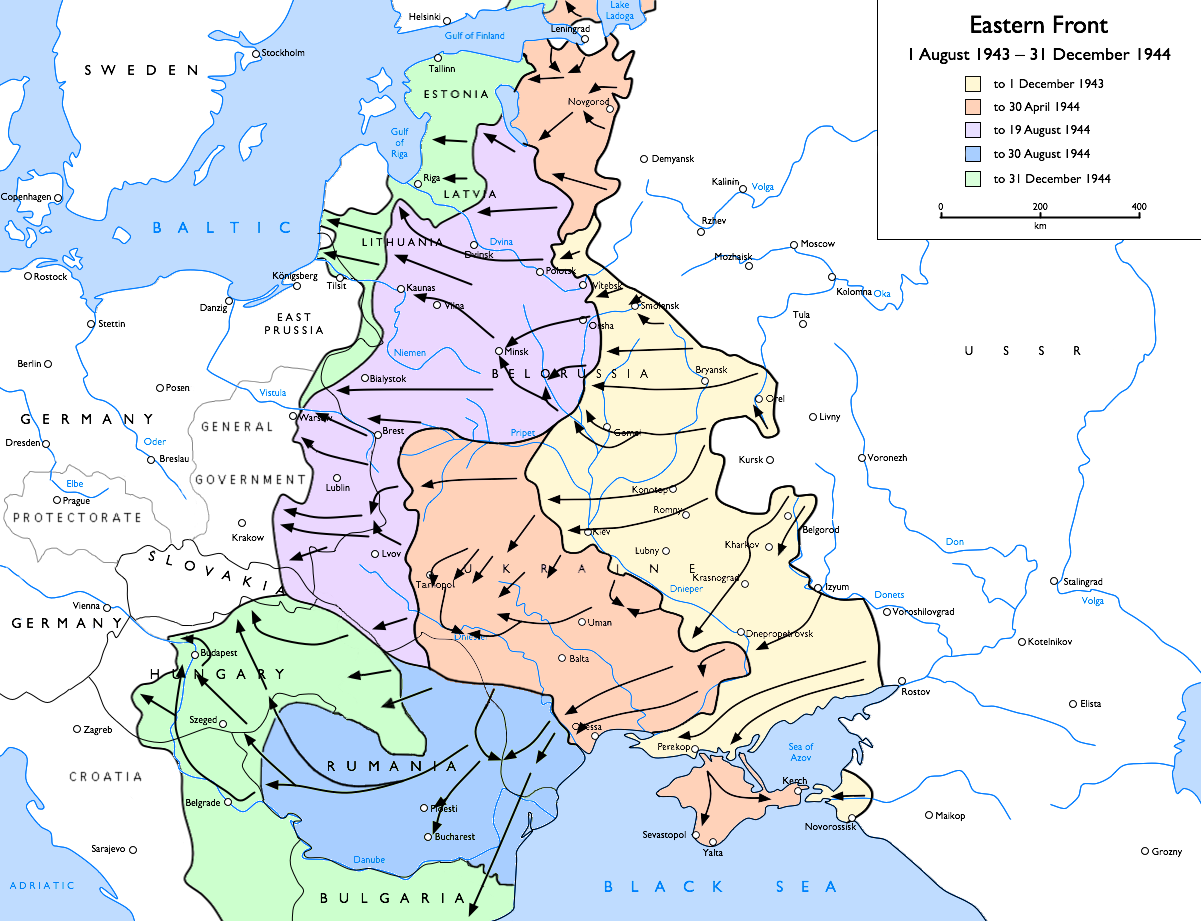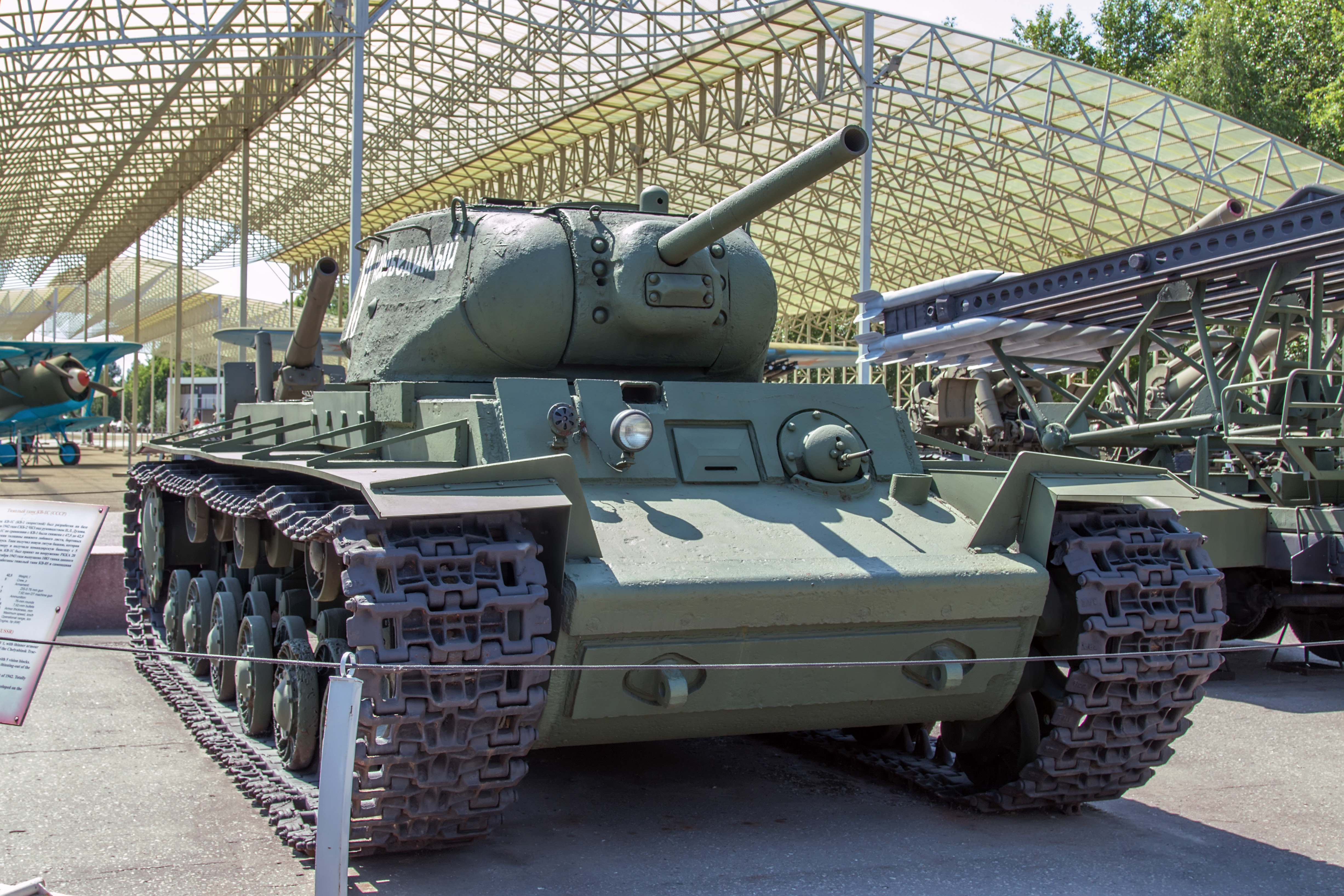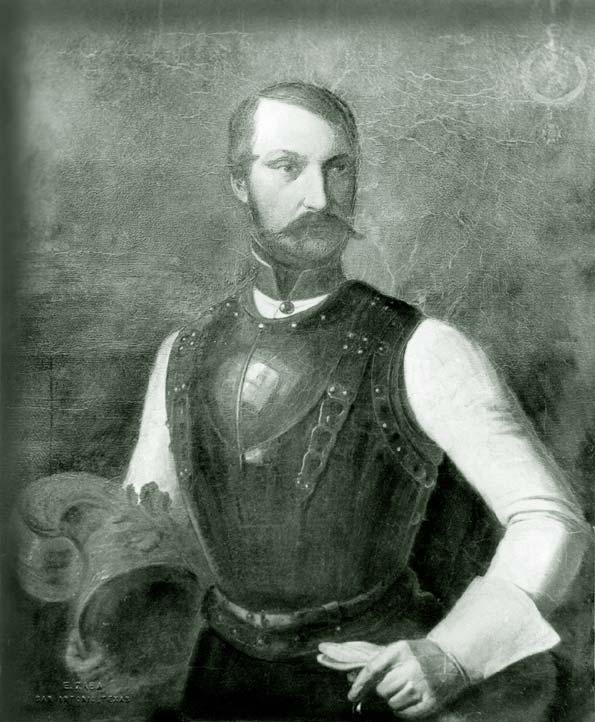|
16th Guards Tank Division
The 16th Guards Tank Division was a tank division of the Soviet Army and later the Russian Ground Forces. The division traced its lineage back to the World War II 3rd Tank Corps, formed in the spring of 1942. The corps received its baptism of fire in the Zhizdra-Bolkhov Offensive during the summer and spent the fall in reserve. In early 1943, the corps fought in Operation Gallop and was destroyed in the Third Battle of Kharkov in late February. The corps was rebuilt in the following months and joined the 2nd Tank Army in June. The corps fought in the Battle of Kursk in July and in the Chernigov-Pripyat Offensive in August and September. In early 1944, it fought in the Korsun-Shevchenkovsky Offensive and the Uman–Botoșani Offensive. For its actions in the latter, the corps received the honorific "Uman" and the Order of Suvorov. During the summer of 1944, the corps fought in the Lublin–Brest Offensive, advancing into Poland. For its actions in the offensive, the corps recei ... [...More Info...] [...Related Items...] OR: [Wikipedia] [Google] [Baidu] |
Soviet Union
The Soviet Union,. officially the Union of Soviet Socialist Republics. (USSR),. was a transcontinental country that spanned much of Eurasia from 1922 to 1991. A flagship communist state, it was nominally a federal union of fifteen national republics; in practice, both its government and its economy were highly centralized until its final years. It was a one-party state governed by the Communist Party of the Soviet Union, with the city of Moscow serving as its capital as well as that of its largest and most populous republic: the Russian SFSR. Other major cities included Leningrad (Russian SFSR), Kiev (Ukrainian SSR), Minsk ( Byelorussian SSR), Tashkent (Uzbek SSR), Alma-Ata (Kazakh SSR), and Novosibirsk (Russian SFSR). It was the largest country in the world, covering over and spanning eleven time zones. The country's roots lay in the October Revolution of 1917, when the Bolsheviks, under the leadership of Vladimir Lenin, overthrew the Russian Provisional Government ... [...More Info...] [...Related Items...] OR: [Wikipedia] [Google] [Baidu] |
Lublin–Brest Offensive
The Lublin–Brest Offensive (russian: Люблин‐Брестская наступательная операция, 18 July – 2 August 1944) was a part of the Operation Bagration strategic offensive by the Soviet Red Army to clear the Nazi German forces from the regions of Eastern Poland and Western Belarus. The offensive was executed by the left (southern) wing of the 1st Belorussian Front and took place during July 1944; it was opposed by the German Army Group North Ukraine and Army Group Centre. The operation was accompanied by several other offensives, particularly the Lvov-Sandomierz Offensive of the 1st Ukrainian Front in the south; both offensives launched weeks after the start of the successful Operation Bagration to the north which cleared German forces from most of Belarus. After reaching its target objectives, the offensive momentum carried on as the Soviet forces advanced on Warsaw during August (2 August – 30 September 1944); however Soviet forces did not a ... [...More Info...] [...Related Items...] OR: [Wikipedia] [Google] [Baidu] |
KV Tank
The Kliment Voroshilov (KV) tanks are a series of Soviet heavy tanks named after the Soviet defence commissar and politician Kliment Voroshilov who operated with the Red Army during World War II. The KV tanks were known for their heavy armour protection during the early stages of the war, especially during the first year of the German invasion of the Soviet Union. In certain situations, even a single KV-1 or KV-2 supported by infantry could halt German formations. The German ''Wehrmacht'' at that time rarely deployed its tanks against KVs, as their own armament was too poor to deal with the "''Russischer Koloss''" – "Russian Colossus". The KV tanks were practically immune to the 3.7 cm KwK 36 and howitzer-like, short-barreled 7.5 cm KwK 37 guns mounted, respectively, on the early Panzer III and Panzer IV tanks fielded by the invading German forces. Until the Germans developed more effective guns, the KV-1 was invulnerable to almost any German weapon except the 8.8 cm Flak gun. ... [...More Info...] [...Related Items...] OR: [Wikipedia] [Google] [Baidu] |
Bryansk Front
The Bryansk Front (russian: Брянский фронт) was a major formation of the Red Army during the Second World War. First Formation (August - November 1941) General Andrei Yeremenko was designated commander of the Front when it first formed in mid-late August 1941, comprising, in Erickson's words, "on paper two armies, 50th and 13th, with eight rifle divisions each, three cavalry divisions, and one tank division but many of these formations were badly whittled down by battle losses." Two other armies from Soviet Central Front, 21st and 3rd Army, which had avoided encirclement at the Battle of Smolensk (1941), were promised but also badly worn down. In late August along with the Western Front (Soviet Union) and the Reserve Front, the Bryansk Front launched a large but unsuccessful counteroffensive in the Smolensk, El'nia, and Roslavl regions to halt Army Group Centre's advance on Moscow. Despite some success by the Reserve Front at El'nia, the efforts by Bryansk Fro ... [...More Info...] [...Related Items...] OR: [Wikipedia] [Google] [Baidu] |
Dmitry Mostovenko
Dmitri (russian: Дми́трий); Church Slavic form: Dimitry or Dimitri (); ancient Russian forms: D'mitriy or Dmitr ( or ) is a male given name common in Orthodox Christian culture, the Russian version of Greek Demetrios (Δημήτριος ''Dēmētrios'' ). The meaning of the name is "devoted to, dedicated to, or follower of Demeter" (Δημήτηρ, ''Dēmētēr''), "mother-earth", the Greek goddess of agriculture. Short forms of the name from the 13th–14th centuries are Mit, Mitya, Mityay, Mit'ka or Miten'ka (, or ); from the 20th century (originated from the Church Slavic form) are Dima, Dimka, Dimochka, Dimulya, Dimusha etc. (, etc.) St. Dimitri's Day The feast of the martyr Saint Demetrius of Thessalonica is celebrated on Saturday before November 8 ld Style October 26 The name day (именины): October 26 (November 8 on the Julian Calendar) See also: Eastern Orthodox liturgical calendar. The Saturday before October 26/November 8 is called Demetrius ... [...More Info...] [...Related Items...] OR: [Wikipedia] [Google] [Baidu] |
Tula, Russia
Tula ( rus, Тула, p=ˈtulə) is the largest city and the administrative center of Tula Oblast in Russia, located south of Moscow. Tula is located in the northern Central Russian Upland on the banks of the Upa River, a tributary of the Oka. At the 2010 census, Tula had a population of 501,169, an increase from 481,216 in 2002, making it the 32nd largest city in Russia by population. A primarily industrial city, Tula was a fortress at the border of the Principality of Ryazan. The city was seized by Ivan Bolotnikov, and withstood a four-month siege by the Tsar's army. Historically, Tula was a major centre for the manufacture of armaments. The Demidov family built the first armament factory in Russia in the city, in what would become the Tula Arms Plant, which still operates to this day. Tula is home to the Klokovo air base, Tula State University, Tula Kremlin, The Tula State Museum of Weapons and Kazanskaya embankment of the Upa River (). Tula has a historical association ... [...More Info...] [...Related Items...] OR: [Wikipedia] [Google] [Baidu] |
Dissolution Of The Soviet Union
The dissolution of the Soviet Union, also negatively connoted as rus, Разва́л Сове́тского Сою́за, r=Razvál Sovétskogo Soyúza, ''Ruining of the Soviet Union''. was the process of internal disintegration within the Soviet Union (USSR) which resulted in the end of the country's and its federal government's existence as a sovereign state, thereby resulting in its constituent republics gaining full sovereignty on 26 December 1991. It brought an end to General Secretary Mikhail Gorbachev's (later also President) effort to reform the Soviet political and economic system in an attempt to stop a period of political stalemate and economic backslide. The Soviet Union had experienced internal stagnation and ethnic separatism. Although highly centralized until its final years, the country was made up of fifteen top-level republics that served as homelands for different ethnicities. By late 1991, amid a catastrophic political crisis, with several republics alre ... [...More Info...] [...Related Items...] OR: [Wikipedia] [Google] [Baidu] |
Cold War
The Cold War is a term commonly used to refer to a period of geopolitical tension between the United States and the Soviet Union and their respective allies, the Western Bloc and the Eastern Bloc. The term '' cold war'' is used because there was no large-scale fighting directly between the two superpowers, but they each supported major regional conflicts known as proxy wars. The conflict was based around the ideological and geopolitical struggle for global influence by these two superpowers, following their temporary alliance and victory against Nazi Germany and Imperial Japan in 1945. Aside from the nuclear arsenal development and conventional military deployment, the struggle for dominance was expressed via indirect means such as psychological warfare, propaganda campaigns, espionage, far-reaching embargoes, rivalry at sports events, and technological competitions such as the Space Race. The Western Bloc was led by the United States as well as a number of other First W ... [...More Info...] [...Related Items...] OR: [Wikipedia] [Google] [Baidu] |
Group Of Soviet Forces In Germany
The Western Group of Forces (WGF),. previously known as the Group of Soviet Occupation Forces in Germany (GSOFG). and the Group of Soviet Forces in Germany (GSFG),. were the troops of the Soviet Army in East Germany. The Group of Soviet Occupation Forces in Germany was formed after the end of World War II in Europe from units of the 1st and 2nd Belorussian Fronts. The group helped suppress the East German uprising of 1953. After the end of occupation functions in 1954 the group was renamed the Group of Soviet Forces in Germany. The group represented Soviet interests in East Germany during the Cold War. After changes in Soviet foreign policy during the late 1980s, the group shifted to a more defensive role and in 1988 became the Western Group of Forces. Russian forces remained in the eastern part of Germany after the dissolution of the Soviet Union and German reunification until 1994. History The Group of Soviet Occupation Forces, Germany was formed after the end of World ... [...More Info...] [...Related Items...] OR: [Wikipedia] [Google] [Baidu] |
Neustrelitz
Neustrelitz (; East Low German: ''Niegenstrelitz'') is a town in the Mecklenburgische Seenplatte district in the state of Mecklenburg-Vorpommern, Germany. It is situated on the shore of the Zierker See in the Mecklenburg Lake District. From 1738 until 1918 it was the capital of the Duchy of Mecklenburg-Strelitz. From 1994 until 2011 it was the capital of the district of Mecklenburg-Strelitz. The name ''Strelitz'' is derived from the Polabian word ''Strelci'', meaning "archers" or "shooters".The related Polish form '' Strzelce'' is still a common toponym in Poland. History The village of Strelitz was first mentioned in 1278. It grew to a small town in the following centuries. In the 17th century Strelitz was a part of the duchy of Mecklenburg-Güstrow, which ceased to exist after the death of the last duke in 1695. Afterwards the new Duchy of Mecklenburg-Strelitz was established (1701). This small duchy contained the present-day district and an exclave around Ratzeburg, which i ... [...More Info...] [...Related Items...] OR: [Wikipedia] [Google] [Baidu] |
Berlin Offensive
The Battle of Berlin, designated as the Berlin Strategic Offensive Operation by the Soviet Union, and also known as the Fall of Berlin, was one of the last major Offensive (military), offensives of the European theatre of World War II. After the Vistula–Oder Offensive of January–February 1945, the Red Army had temporarily halted on a line east of Berlin. On 9 March, Germany established its defence plan for the city with Operation Clausewitz. The first defensive preparations at the outskirts of Berlin were made on 20 March, under the newly appointed commander of Army Group Vistula, General Gotthard Heinrici. When the Soviet offensive resumed on 16 April, two Soviet Front (military formation)#Soviet fronts in World War II, fronts (army groups) attacked Berlin from the east and south, while a third overran German forces positioned north of Berlin. Before the main battle in Berlin commenced, the Red Army encircled the city after successful battles of the Battle of the S ... [...More Info...] [...Related Items...] OR: [Wikipedia] [Google] [Baidu] |
Order Of Lenin
The Order of Lenin (russian: Орден Ленина, Orden Lenina, ), named after the leader of the Russian October Revolution, was established by the Central Executive Committee on April 6, 1930. The order was the highest civilian decoration bestowed by the Soviet Union. The order was awarded to: * Civilians for outstanding services rendered to the State * Members of the armed forces for exemplary service * Those who promoted friendship and cooperation between people and in strengthening peace * Those with meritorious services to the Soviet state and society From 1944 to 1957, before the institution of a specific length of service medals, the Order of Lenin was also used to reward 25 years of conspicuous military service. Those who were awarded the titles "Hero of the Soviet Union" and " Hero of Socialist Labour" were also given the order as part of the award. It was also bestowed on cities, companies, factories, regions, military units, and ships. Various educational instituti ... [...More Info...] [...Related Items...] OR: [Wikipedia] [Google] [Baidu] |


.jpg)
.png)
.png)

